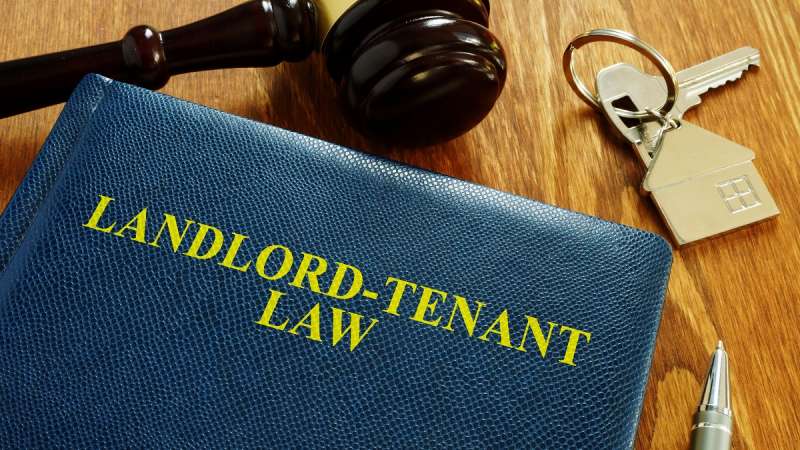What is Forfeiture of a Lease?
Lease forfeiture is the landlord's legal action to end a lease, sometimes known as "re-entry."
A commercial lease may be forfeited under the following circumstances:
- When the tenant fails to meet its lease obligations.
- In specific situations explicitly outlined in the lease agreement (more information provided below).
Forfeiture of a lease (or a right of re-entry) is a useful right for a commercial landlord, particularly when faced with a difficult tenant in a dynamic market.
However, if used incorrectly, the right to claim forfeiture has many potential pitfalls and landlords should exercise caution and seek legal advice before exercising the right to forfeit under a lease.
Wrongful forfeiture can result in a tenant making a claim against the landlord for any losses which the tenant has suffered as a result of the landlord’s unlawful action, together with an injunction requiring the landlord to allow them back into the property.
This can result in significant cost consequences for the landlord.
How Our Commercial Forfeiture of Lease Team Can Help
If used incorrectly the right to claim forfeiture has many potential pitfalls and landlords should exercise caution and seek legal advice before exercising the right to claim forfeiture under a lease.
Our commercial forfeiture team can help with the following:
- Reviewing the lease and advising on whether there is a right to forfeit the lease.
- Advising on whether a landlord may have waived their right to forfeit the lease.
- Drafting and serving a section 146 notice on the tenant.
- Advising a tenant on the validity of a section 146 notice that has been served on them.
- Instructing agents to peaceably re-enter the premises.
- Preparing Court proceedings on behalf of the landlord to forfeit the lease.
- Responding to proceedings that have been issued to forfeit a lease on behalf of the tenant.
- Advising on wrongful forfeiture and issuing proceedings on behalf of the tenant for a declaration that the forfeiture was wrongful.
- Advising a tenant on the ability to apply for relief from forfeiture and making an application to Court to reinstate the lease.
- Defending an application for relief from forfeiture on behalf of the landlord.
Forfeiture of Commercial Lease FAQs
What Is the Landlord’s Right to forfeit?
A lease entails tenant obligations, including payment of rent, maintenance of property condition, and restrictions on assigning or subletting without the landlord’s consent.
If these obligations are breached, the landlord may consider repossessing the property and terminating the lease, with some leases permitting re-entry in specific instances, like tenant insolvency.
What Are the Alternatives to Lease Forfeiture?
When facing the possibility of lease forfeiture due to non-payment of rent, landlords have several alternatives to consider:
- Tenant Discussions: Engage in discussions with the tenant to resolve the payment issue amicably.
- For landlords facing tenants with cash flow issues, an alternative to forfeiture might be considering a concession arrangement that allows monthly commercial lease payments instead of quarterly ones.
- Utilise Security: Call upon any available forms of security, such as a rent deposit or guarantees.
- County Court Debt Recovery: Pursue a standard debt recovery claim through the county court.
- Serve a Statutory Demand: Issue a formal statutory demand, which serves as a precursor to a winding-up or bankruptcy petition, exerting significant pressure on the recipient. The recipient must either pay or challenge the demand within a short timeframe. An unanswered statutory demand can be used as evidence of insolvency or bankruptcy in subsequent legal actions.
- Commercial Rent Arrears Recovery: Explore the commercial rent arrears recovery process to recover unpaid rent.
- If the potential reason for lease forfeiture arises from issues other than non-payment of rent, such as unauthorised alterations, landlords may consider:
- Negotiations with the Tenant: Engage in negotiations with the tenant to address the issue or reclaim possession of the property.
- County Court Claim: Pursue a claim in the county court to seek specific remedies, such as injunctions or damages.
To facilitate negotiations, landlords can benefit from the expertise of Myerson's Property Litigation and Commercial Property Solicitors, as well as our team of alternative Dispute Resolution Solicitors.
What Are the Methods of Lease Forfeiture?
Lease forfeiture can be achieved by a landlord through two primary methods: "peaceable re-entry" or obtaining a court order.
Peaceable Re-entry
Peaceable re-entry involves physically regaining possession of the property. The term "peaceable" refers to the person, not necessarily the property itself.
While some force can be used to recover possession of the property, it must not be excessive, and using violence when someone objects at the property is a criminal offence.
Commercial landlords often secure re-entry by actions like changing locks and blocking access to open areas.
Commercial properties often undergo re-entry outside of business hours when the property is likely to be empty. Landlords may choose to hire a certified bailiff for re-entry.
After re-entry, the landlord should prominently display a notice on the property, which typically includes:
- A general statement informing the tenant of lease forfeiture through re-entry.
- Reference to the lease clause authorising forfeiture.
- A statement that only individuals authorised by the landlord can legally enter the premises, with any unauthorised attempt being a criminal offence.
- Detailed property information and landlord or agent contact details.
Forfeiture by Court Proceedings
If the landlord opts for legal proceedings to forfeit a lease, the lease termination occurs when the court issues an order for possession. Where a landlord is looking to forfeit by court proceedings for a breach other than non-payment of rent, they must first serve a s.146 notice before commencing proceedings. If the court grants an order for possession following the issuing of proceedings his order applies retroactively.
Specific procedures for court applications depend on whether the property is a commercial or residential property, as outlined in the civil procedure rules.
What Happens in Cases of Wrongful Forfeiture?
If a landlord attempts to forfeit the lease before the right to forfeit has arisen the tenant may bring a claim against the landlord for wrongful forfeiture.
The tenant’s remedy will be a declaration from the Court as to the wrongful forfeiture, together with a claim for damages or an injunction to allow the tenant back into the property.
The landlord may have to pay for any losses suffered by the commercial tenant, such as legal and other expenses.
What Is Waiver of Forfeiture in Commercial Leases?
When contemplating lease forfeiture, a landlord must exercise caution to avoid inadvertently waiving their rights.
A waiver occurs when the landlord:
- Clearly acknowledges the ongoing existence of the lease.
- Possesses knowledge of the tenant's breach.
- Acts as if the lease is continuing.
To minimise risk, landlords should initiate forfeiture proceedings as soon as the right to forfeit arises.
Tenants, if necessary, must demonstrate to a court that the landlord had knowledge of the breach and provide evidence of this awareness.
It's important to note that accepting rent, in particular, constitutes a clear act acknowledging the lease's continuation and informing the tenant of such continuation of the tenancy agreement.
How Can a Tenant Defend Against a Claim for Forfeiture?
If a landlord has executed peaceable re-entry or initiated forfeiture court proceedings, a tenant can safeguard their lease by seeking "relief from forfeiture" through a court application.
Relief from forfeiture is a discretionary equitable remedy.
The court's primary consideration is whether granting relief will restore the landlord and the tenant to their pre-forfeiture positions.
If relief is granted, the lease will be reinstated, as if no forfeiture had occurred.
For leases forfeited due to non-payment of rent, the tenant must settle the outstanding rent to secure relief.
In cases of forfeiture for breaches other than non-payment, the tenant must either rectify the breach or compensate for breaches that cannot be rectified (provided compensation suffices) to defend against forfeiture.
Why Work With Our Property Litigation Team
- Our property litigation lawyers have been ranked as a top-tier law firm by the Legal 500 for the last seven years.
- You will have access to more than 30 property experts across the Myerson Property Group, including commercial property, construction, residential property conveyancing and development.
- You will receive city-quality commercial property legal advice at regional prices.
- We provide a partner-led service to ensure you receive the best legal advice and commercially-minded support.
- Our property litigation solicitors compromise a large team which is capable of meeting your deadlines.
- We understand that each transaction is bespoke to your individual circumstances and that you need support from a property lawyer who is experienced in dealing with a wide variety of clients and types of work.
- We are a full-service law firm operating from a one-site office, which means our teams communicate effectively and efficiently.
- We use the latest technology to ensure that we are working as efficiently as possible and that geographical distance is no bar to us from providing excellent client service.
- We were the winners of ‘Property Team of the Year 2021’ at the Manchester Legal Awards.
- We provide free newsletters and webinars to all our clients to keep you up to date with the real estate sector and changes in the law. Watch our latest property update webinar here.
- Take a look at the Myerson Promise for further benefits of working with us here.
Testimonials
Forfeiture of Commercial Lease Case Studies
Philip J Davies (Holdings) PLC - Navigating Lease Forfeiture and Securing Reletting Opportunities
Our client is a commercial landlord and property developer.
Case Overview:
Philip J Davies (Holdings) PLC held the reversion to a long lease of an entire building that had been rented to Carillion. Carillion had underlet part of the building to a charity.
Carillion entered liquidation and the liquidators disclaimed the head lease, leaving the undertenant in occupation but its right to occupy affected by the disclaimer.
We advised our client regarding their options, given a possible re-letting of the entire premises to a school (which was the condition upon the charity vacating).
Avoiding the situation where the charity became a periodic tenant or seeking a vesting order, our client forfeited the charity’s under lease and granted them a license to occupy, which enabled the charity time to find alternative accommodation and enabled our client to secure vacant possession which enabled the reletting of the entire building to the school.
Abbasi & Salek Partnership - Secure Relief from Forfeiture and Protect Their Rights
Our clients are property developers and portfolio owners.
Case Overview:
Our clients are the owner of a long lease of parts of the basement, ground floor and upper floor of a building known as Asia House, formerly a commercial building. Our clients converted its premises into residential units worth £1.3m and rented them out.
The rest of the building is owned by our clients’ landlord which is a Jersey based subsidiary of an international pension fund. It had also been converted into residential units which are rented to apartment owners under long leases.
The landlord forfeited our clients’ lease by issuing possession proceedings following the service of a section 146 notice, alleging breach of covenants during the conversion works. Our clients sought relief from forfeiture.
The landlord excluded our clients’ and their tenants from the common parts of the building on the basis they had forfeited the lease. Our clients secured injunctive relief prohibiting the landlord from interfering with our clients’ and their tenants’ rights under the lease.
The landlord refused to give effect to the injunction obtained with the result that our clients applied for the landlord’s assets to be sequestered and the directors of the landlord be committed to prison. The landlord capitulated at the committal hearing and were ordered to pay our clients’ costs of the injunction and committal proceedings.
The landlord discontinued its possession claim and consented to our clients’ application for relief from forfeiture and agreed to pay our clients’ costs.
Laura Pile, a Partner in the Property Litigation team says “This matter demonstrates the depth of our technical and legal abilities in high value complex matters.”
Supporting a Commercial Landlord in Forfeiting a Lease and Regaining Possession of a Garden Centre
Our client is a commercial landlord.
Case Overview:
The tenant occupied the commercial property and traded as a garden centre. The tenant had significant arrears of rent.
We advised the landlord to use their right to forfeit the lease and peaceably re-enter the property and change the locks.
Our Property Litigation Team
Home-grown or recruited from national, regional or City firms. Our property litigation lawyers are experts in their fields and respected by their peers.
Contact Our Experts
You can contact our lawyers below if you have any more questions or want more information:







